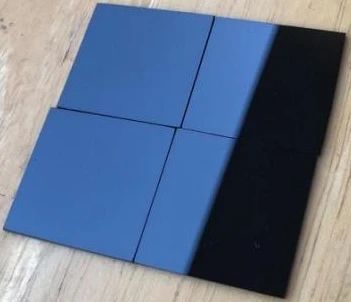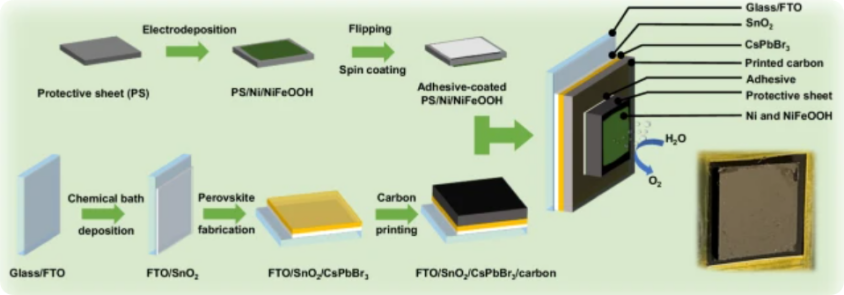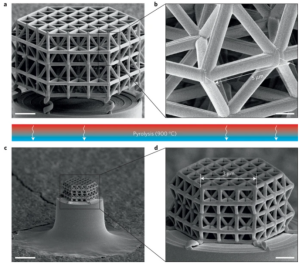Código QR

Sobre nós
Produtos
Contate-nos

Telefone

Fax
+86-579-87223657

E-mail

Endereço
Wangda Road, Ziyang Street, condado de Wuyi, cidade de Jinhua, província de Zhejiang, China

Glassy carbon, also known as glassy carbon for short, is a non-graphitized carbon that combines the properties of glass and ceramics. It is made by sintering a polymerized organic precursor at high temperature in an inert gas atmosphere. Because it is black throughout and has a smooth surface similar to glass, it is called glassy carbon.
Glass carbon has a series of excellent properties and can be processed into various shapes, so it has a wide range of application prospects:
● High temperature resistance: Glass carbon can be used for a long time in an inert gas or vacuum at about 3000°C without brittleness. It is suitable for almost all high temperature protection occasions such as pyrometer protection tubes, charging systems, and high temperature furnace parts;
● Corrosion resistance: Glass carbon is resistant to all wet decomposition agents, acid and alkali melts, and has no memory effect. It can be used in conventional laboratory equipment and the analysis samples are pollution-free;
● Thermal conductivity and non-wetting: The thermal conductivity of glass carbon is ~80W/(m▪K), which is close to that of metal iron. It can be used in crucibles to melt precious metals and titanium alloys, and shorten the heating and melting time; its non-wetting property also eliminates the problem of material loss;
● High purity and no particles: Glass carbon is made into crucibles and boats, which is an ideal material for semiconductor production; it can also be used as parts of ion implantation systems and electrodes of plasma etching systems, etc.
● Good conductivity: Glassy carbon electrodes have a wide potential range, which can be used to study inorganic substances in the negative potential zone and the redox reactions of organic substances in the positive potential zone; scientists have used glassy carbon electrode sensors to complete the voltammetric analysis of drugs and realize ultra-stable perovskite photoelectrodes.

Schematic diagram of the process of preparing perovskite photoanode from glassy carbon and light absorber
Since scientists first synthesized glassy carbon in 1962, the study of the structure and properties of glassy carbon has been a hot topic in the field of carbon materials. Glassy carbon is a typical sp2 hybridized disordered carbon structure. Type I glassy carbon is formed by sintering polymerized organic matter at a temperature below 2000°C, and its interior is mainly composed of disordered curled graphene fragments; Type II glassy carbon is sintered at a higher temperature and is a disordered multilayer graphene three-dimensional matrix.
With the development of technical means, the structural evolution and intrinsic properties of glassy carbon have been further revealed. Karlsruher Institut für Technologie used in situ high-resolution transmission electron microscopy (HR-TEM) to visualize the structural evolution of polymer pyrolysis in the temperature range of 500-1200°C. The results showed that:
● Fullerenes, strongly curved graphene sheets, and smaller two-dimensional graphene sheets coexist in glassy carbon with relatively large size and shape, stacked (<10 layers) or interconnected graphene fragments;
● The micropores in glassy carbon are not entirely attributed to fullerene structures, because the distribution and proportion of fullerene structures strongly depend on the surface area of the sample. Unlike few-layer graphene structures, random pores in 3D samples account for the majority;
● Graphene fragments are interconnected with σ and π bonds, resulting in a range of C-C bond lengths in glassy carbon, and the inherent non-six-membered rings further lead to the diversity of bond lengths;
● Graphene fragments do not always increase, and local instability at low temperatures causes smaller flakes to occasionally separate or merge with larger flakes. J. Bauer and others from Karlsruhe Institute of Technology used photolithography to process polymer honeycomb micro-architectures, and then prepared ultra-strong nano-glass carbon with a single pillar shorter than 1μm and a diameter as small as 200nm through pyrolysis; the material strength is as high as 3GPa, which is approximately equivalent to the theoretical strength of glassy carbon; the density of the glassy carbon honeycomb topological structure is only 0.6g/cm3, achieving an effective strength of 1.2GPa.
TEM images of the migration of small graphene flakes during pyrolysis.
(A-C) Circular flakes separated from larger graphene blocks (arrow 1);
(D-F) Flakes merged with adjacent materials at 780°C (arrow 2). Scale bar: 2 nm.

a, b, polymer structure before pyrolysis: overall structure (a) and close-up of a single unit cell (b);
c, d, the nanolattice shrinks isotropically to about 20% of its initial size during pyrolysis.
Luton Electrochemistry and Chenrui New Materials have achieved the domestic preparation of glassy carbon, and have achieved mass production of 5μm-level ultra-thin glassy carbon products.
Future development trends include:
● Realize the large-scale application of semiconductor-grade glassy carbon coatings, which are used as insulation materials for crystal growth furnaces to solve the problem of thermal field stability of SiC crystal growth, while reducing energy consumption by 20%;
● Glassy carbon as a bipolar plate material for fuel cells of new energy vehicles can increase battery efficiency by 15%;
● Lightweight glassy carbon composite materials (ρ<1.3g/cm³) are used in rocket engine nozzles to greatly improve temperature resistance.
Veteksemicon is a leading manufacturer and supplier of Glassy Carbon raw materials in China. Our Glassy Carbon Coated Graphite Crucible has a wide range of applications in the field of semiconductor processing and has won high recognition from customers in semiconductor powerhouses such as Europe, America, Japan, and South Korea. Welcome to consult us.



+86-579-87223657


Wangda Road, Ziyang Street, condado de Wuyi, cidade de Jinhua, província de Zhejiang, China
Copyright © 2024 VeTek Semiconductor Technology Co., Ltd. Todos os direitos reservados.
Links | Sitemap | RSS | XML | Privacy Policy |
